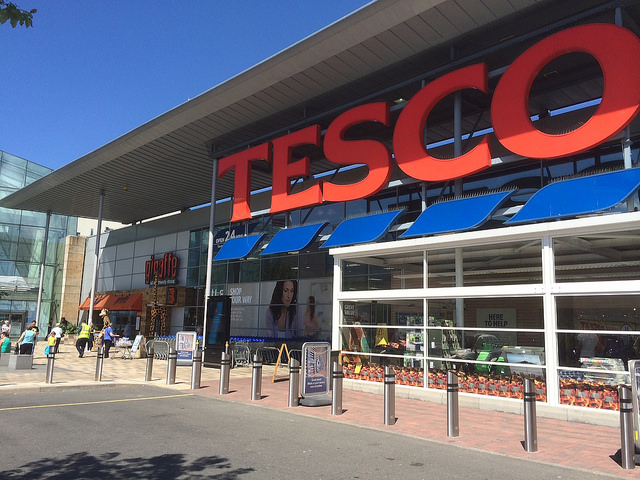Tesco on record loss and new relationship with suppliers
Britain’s biggest supermarket chain, Tesco, today announced a £6.37 billion loss, the worst result in its 96-year history.
And the pre-tax loss for the year to February 28 – compared to a profit last year of £2.26 billion – comes as the grocer’s new CEO, Dave Lewis, says the food retail market “is still challenging and we are not expecting any let up in the months ahead.” About £4.7 billion of the loss was due to the reduced value of Tesco’s store empire.
Online grocery sales growth
But on the positive side, the retail giant also reported that customer transactions, having been in decline since the beginning of 2012, rose 1.5%, and its UK like-for-like sales volumes improved in the fourth quarter. It said the latter rise – the first in over four years – was driven by better availability, service and pricing.
And in its preliminary 2014/15 results statement, Tesco said its online grocery business continued to grow ahead of the market, driven by an increase of nearly 20% in the number of orders year-on-year.
Outlook: focus on regaining competitiveness
Also in the statement, Tesco said that in the next 12 months it will continue to focus on our three priorities:
- regaining competitiveness in its UK business;
- protecting and strengthening the balance sheet;
- and rebuilding trust and transparency in the business and brand.
Tesco promises more focused range, new relationship with suppliers
Tesco said a new approach to its cash payment terms with suppliers, involving “fundamental change to the way we do business with our suppliers, with significantly less focus on commercial income,” further impacted its profitability.
It its statement it said that as part of its efforts to rebuild trust and transparency it has increased its focus on building “longer-term, mutually beneficial partnerships” with its suppliers.
Since last October it has met with over 100 suppliers, “creating new business plans to drive volume growth through a more focused range and create cost efficiencies throughout the whole supply chain,” it said.
Payments to and from suppliers
Tesco included in its statement a section explaining the commercial income forming part of its overall economic relationship with suppliers. “Consistent with standard grocery market practice, we negotiate a very wide range of payments to and from our suppliers including fees, contributions, discounts, multiple offers and volume rebates,” it said.
“Whilst we have embarked on a fundamental review which will significantly simplify our approach, in total we currently use over 20 different categories of variation in payment terms. Many of these relate to adjustments to a cost price and can be considered (and are in practice) a part of the standard unit price variations that can be expected under normal, competitive market conditions.”
A number of commercial income categories can be conditional on the satisfaction of certain actions or performance conditions by either Tesco or the supplier in question, including the achievement of agreed sales volume targets, the provision of certain benefits such as marketing materials or promotional product positioning, and costs incurred for unplanned variations in product specification, it said.
Read more from the Tesco statement here.


